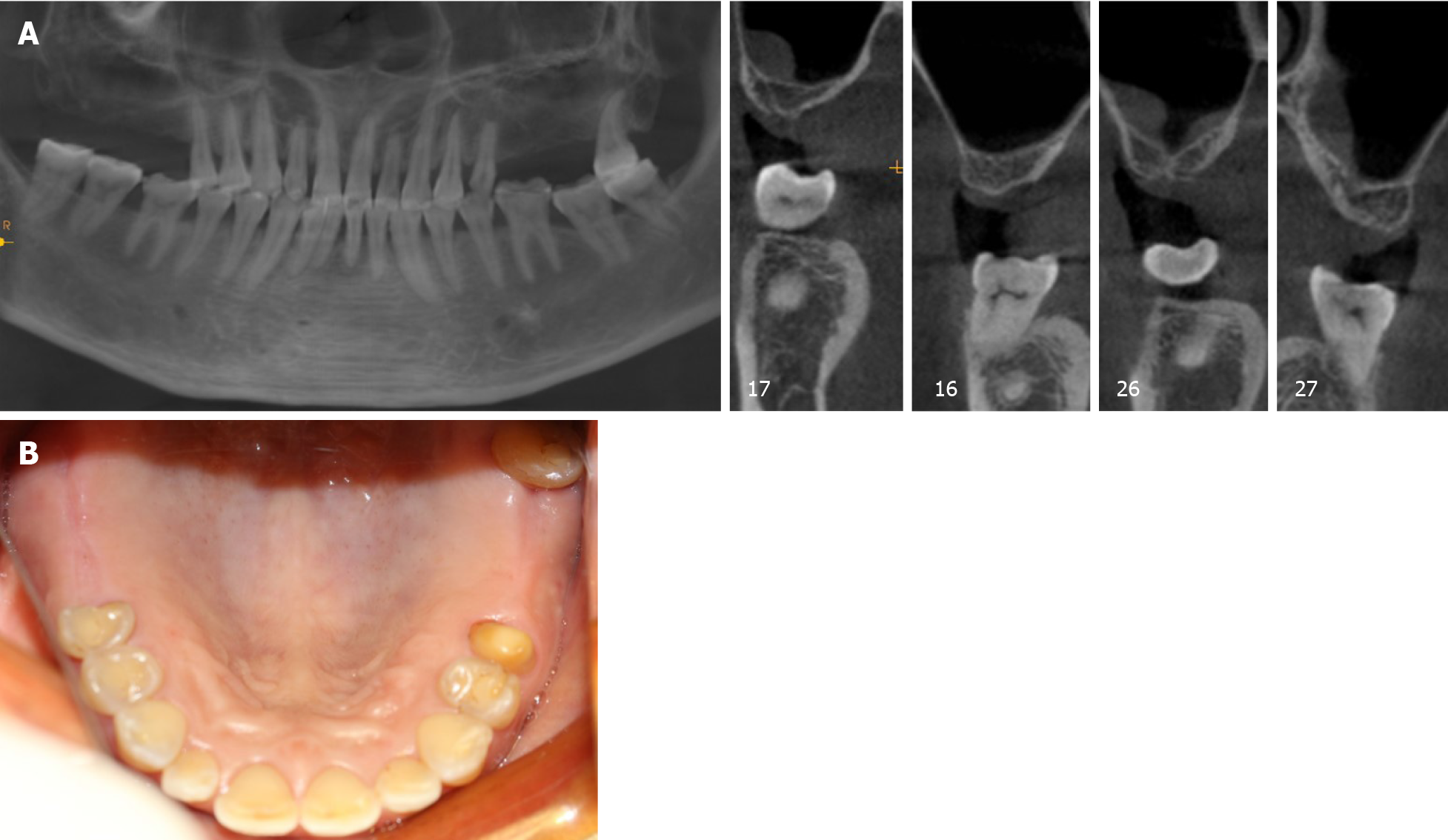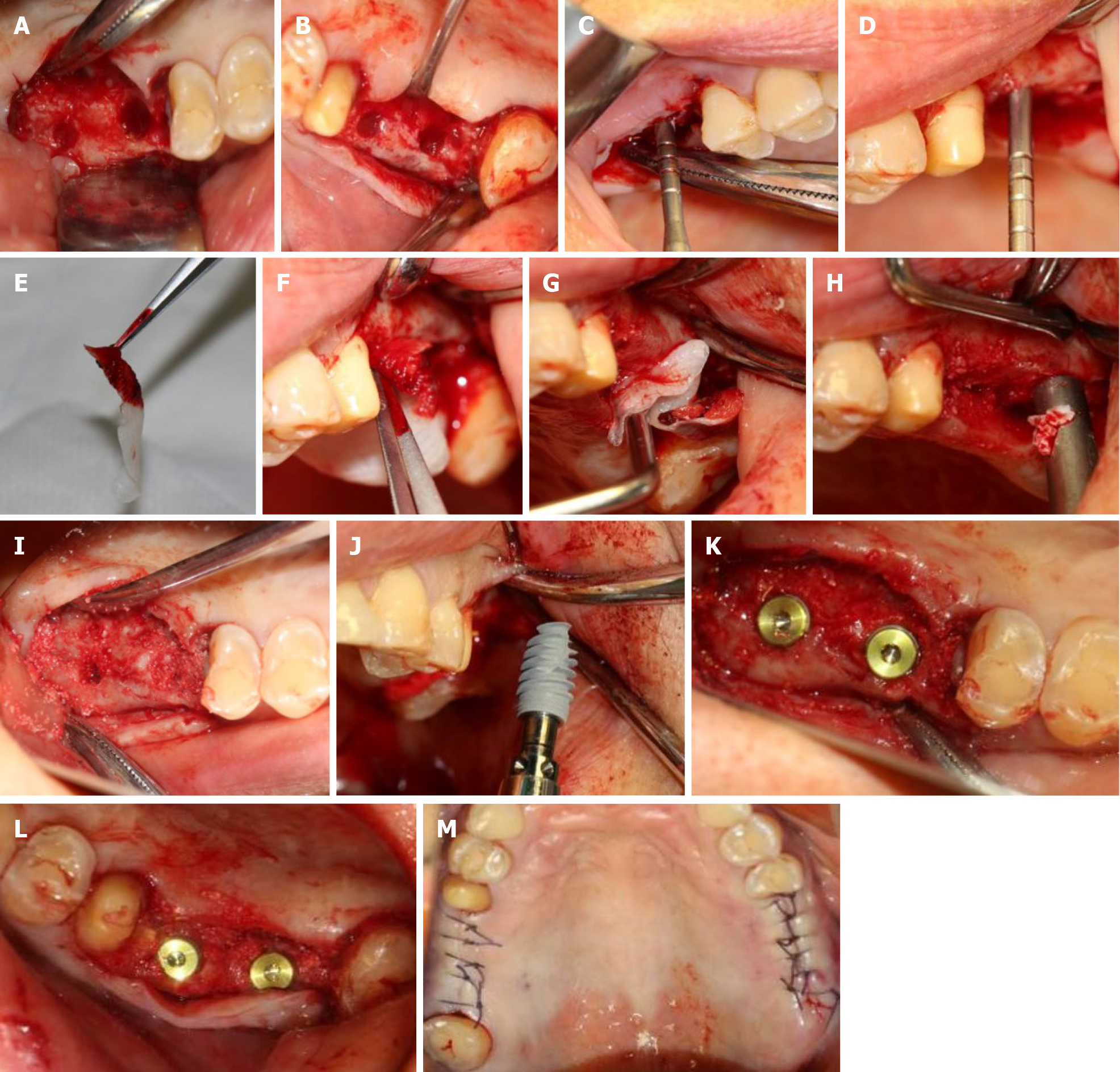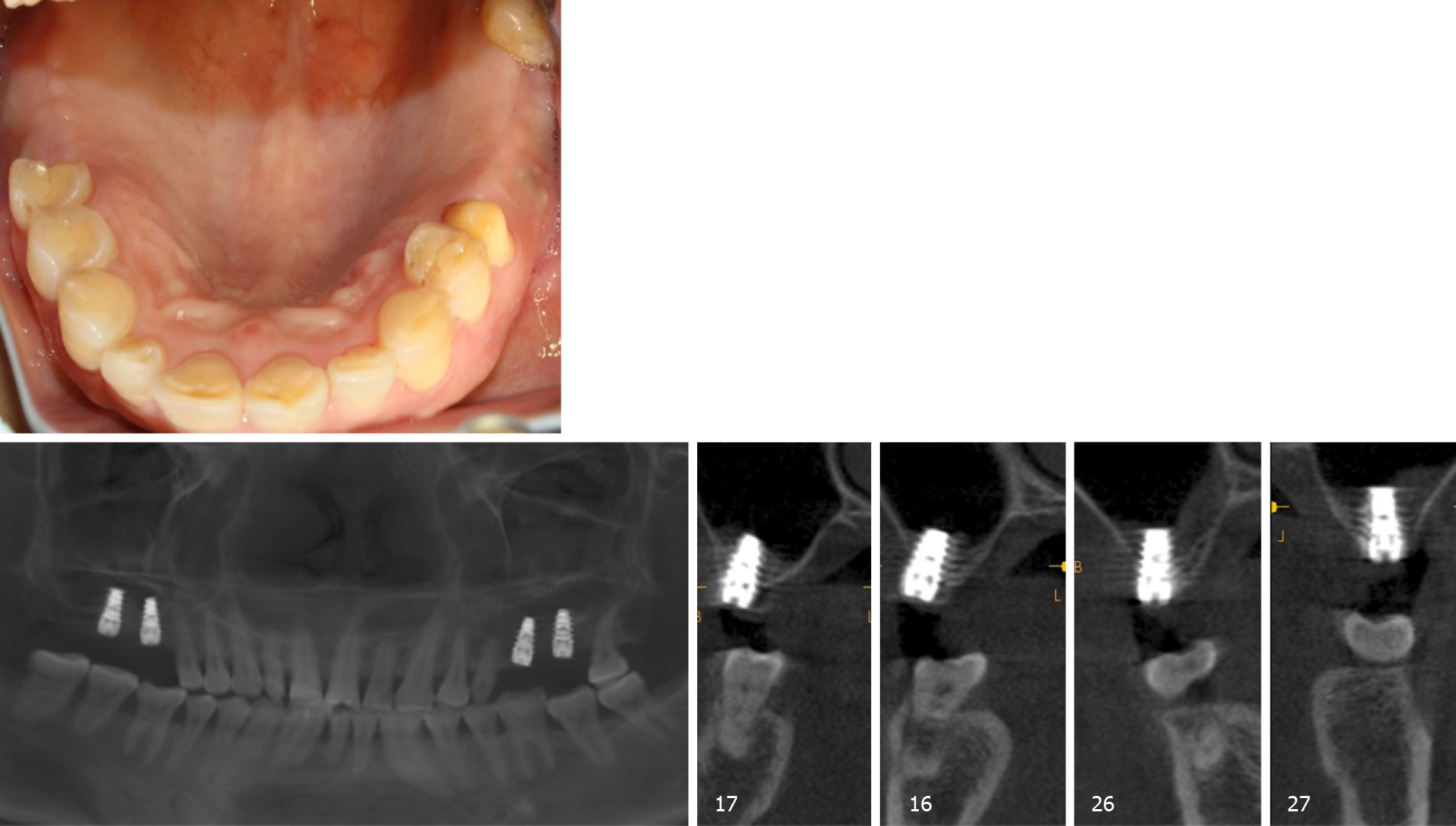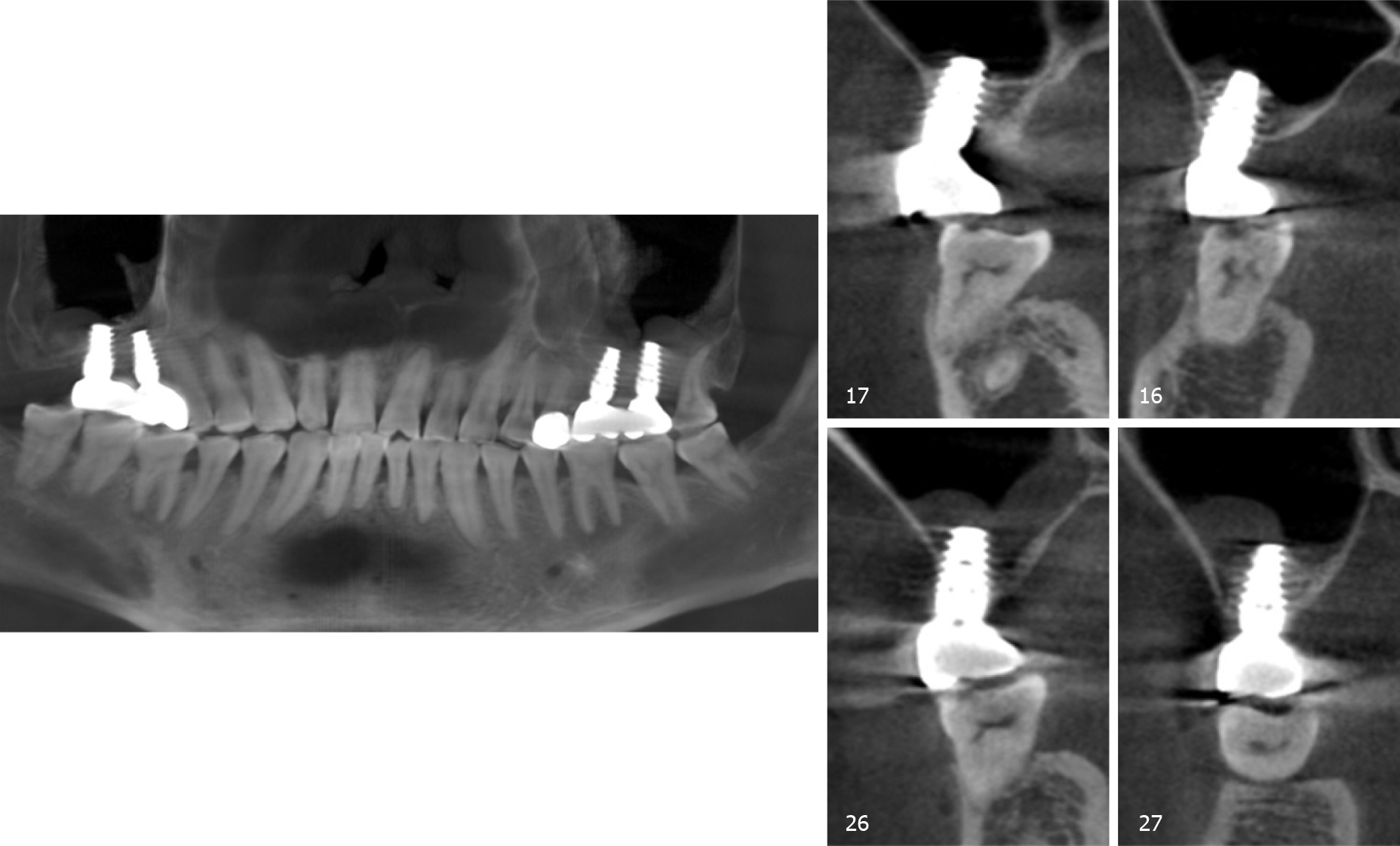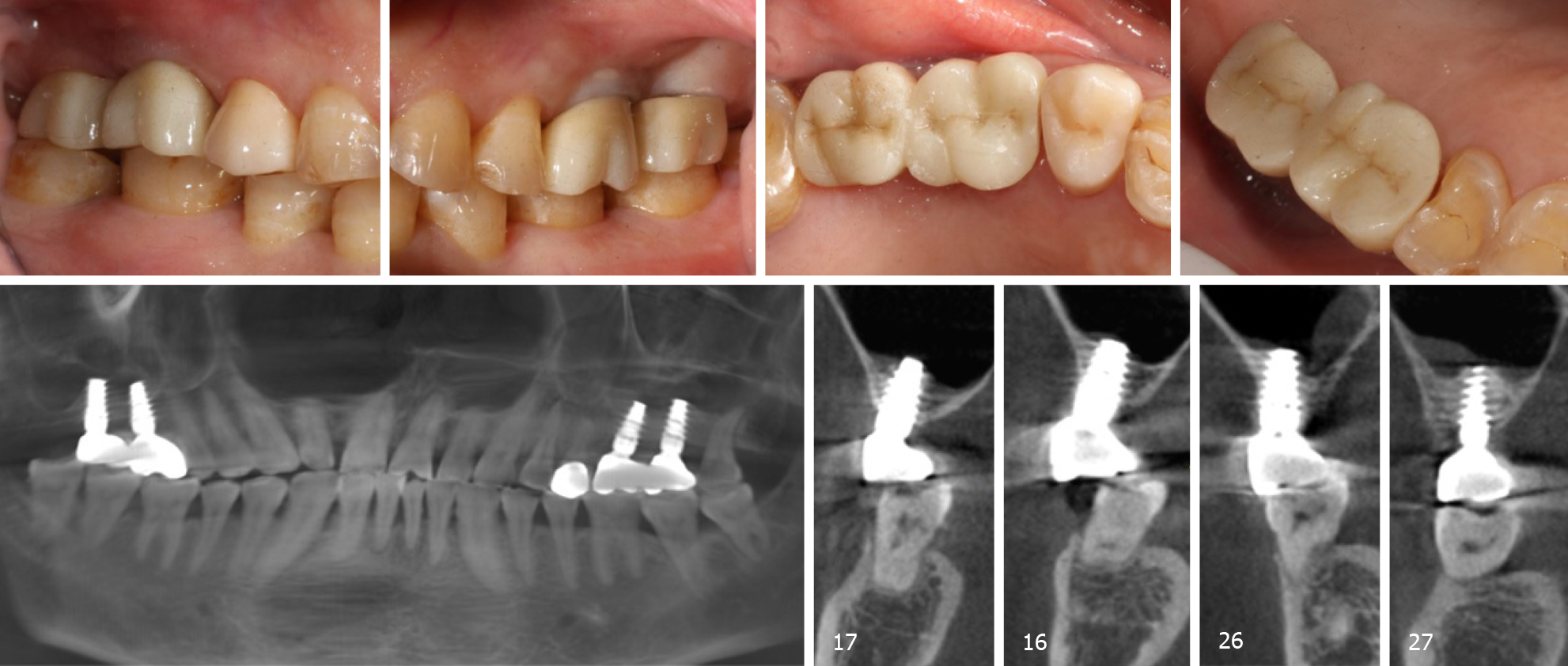Copyright
©The Author(s) 2020.
World J Clin Cases. Dec 26, 2020; 8(24): 6408-6417
Published online Dec 26, 2020. doi: 10.12998/wjcc.v8.i24.6408
Published online Dec 26, 2020. doi: 10.12998/wjcc.v8.i24.6408
Figure 1 Preoperative cone-beam computed tomography and intraoral photograph.
A: Preoperative cone-beam computed tomography; B: Intraoral photograph.
Figure 2 First-stage surgery.
A and B: Nest preparation on the right; C and D: Bilateral internal maxillary sinus floor elevation; E: Platelet-rich fibrin (PRF) clots were compressed between sterile dry gauze; F and G: Established PRF membranes were placed in the primary elevated sinus floor; H and I: Implantation of the bovine bone graft material; J: Implant (4.3 mm × 10 mm, Nobel Active, Sweden) was implanted with a torque of 35 N·cm; K and L: Placement of a suitable cover screw; M: Stitches in the wound.
Figure 3 Cone-beam computed tomography after the first-stage surgery.
Figure 4 Six months after the first surgery.
Figure 5 Six months later, the second-stage surgery was performed and the cover screw was replaced with the healing cap.
Figure 6 Zirconia ceramic crowns were constructed.
A-D: A painless 35 N·cm torque was added to put the abutment in place; E and F: Zirconium-ceramic crowns; G and H: Buccal view of the final prosthesis in place; I-K: Occlusal view of the final prosthesis in place.
Figure 7 One month after permanent restoration.
Figure 8 Patient was followed-up for 30 mo after the first stage surgery.
- Citation: Yang S, Yu W, Zhang J, Zhou Z, Meng F, Wang J, Shi R, Zhou YM, Zhao J. Minimally invasive maxillary sinus augmentation with simultaneous implantation on an elderly patient: A case report. World J Clin Cases 2020; 8(24): 6408-6417
- URL: https://www.wjgnet.com/2307-8960/full/v8/i24/6408.htm
- DOI: https://dx.doi.org/10.12998/wjcc.v8.i24.6408









